KHAN YOUNIS, Gaza Strip — While there was joy on the faces of some Palestinians who returned to the Gaza Strip this week after two years of war, many said they found their old neighborhoods unrecognizable due to relentless fighting that reduced many of the buildings to rubble.
Following the historic ceasefire agreement enacted on Monday, tens of thousands of displaced residents and nearly 2,000 Palestinians released from Israeli prisons returned to Gaza, only to find themselves homeless.
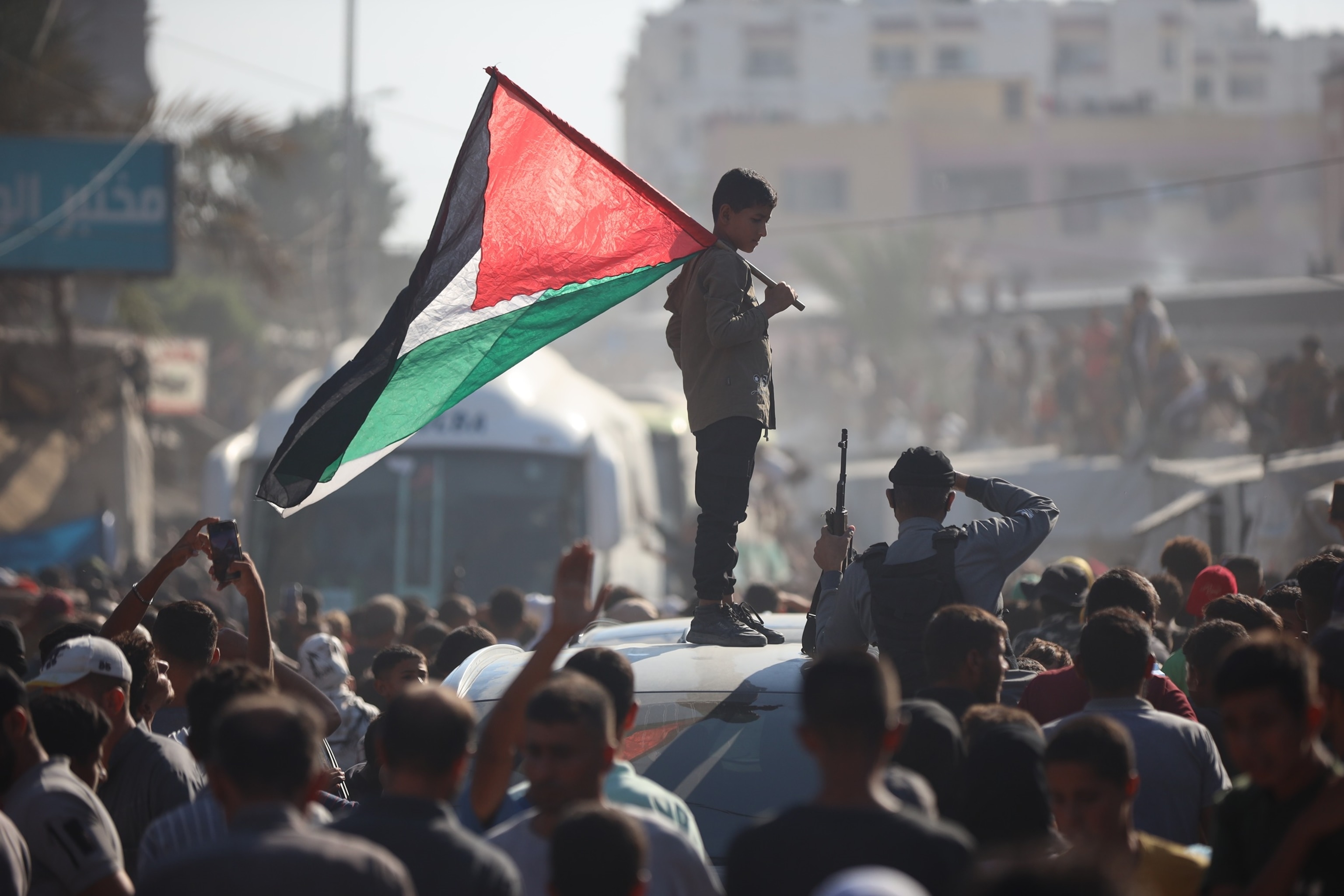
Buses carrying Palestinians released from Israeli prisons under a ceasefire in Gaza and a hostage exchange agreement with Palestinian factions arrive at the Nasser hospital in Khan Yunis, Gaza Strip, on October 13, 2025.
Nurphoto/NurPhoto via Getty Images
“Of course, I was happy to be released, but not happy to be displaced with no security, no necessities of life,” said Abdullah Wa’el Mohammed Farhan, 23, one of the former Palestinian prisoners freed Monday as part of a ceasefire deal that President Donald Trump helped negotiate.
Standing outside a tent in Khan Younis, where he and his family live, Farhan told ABC News that he was imprisoned for 20 months while the war with Israel continued. He said that while detained, he and the other Palestinian prisoners were “completely isolated from the world.”
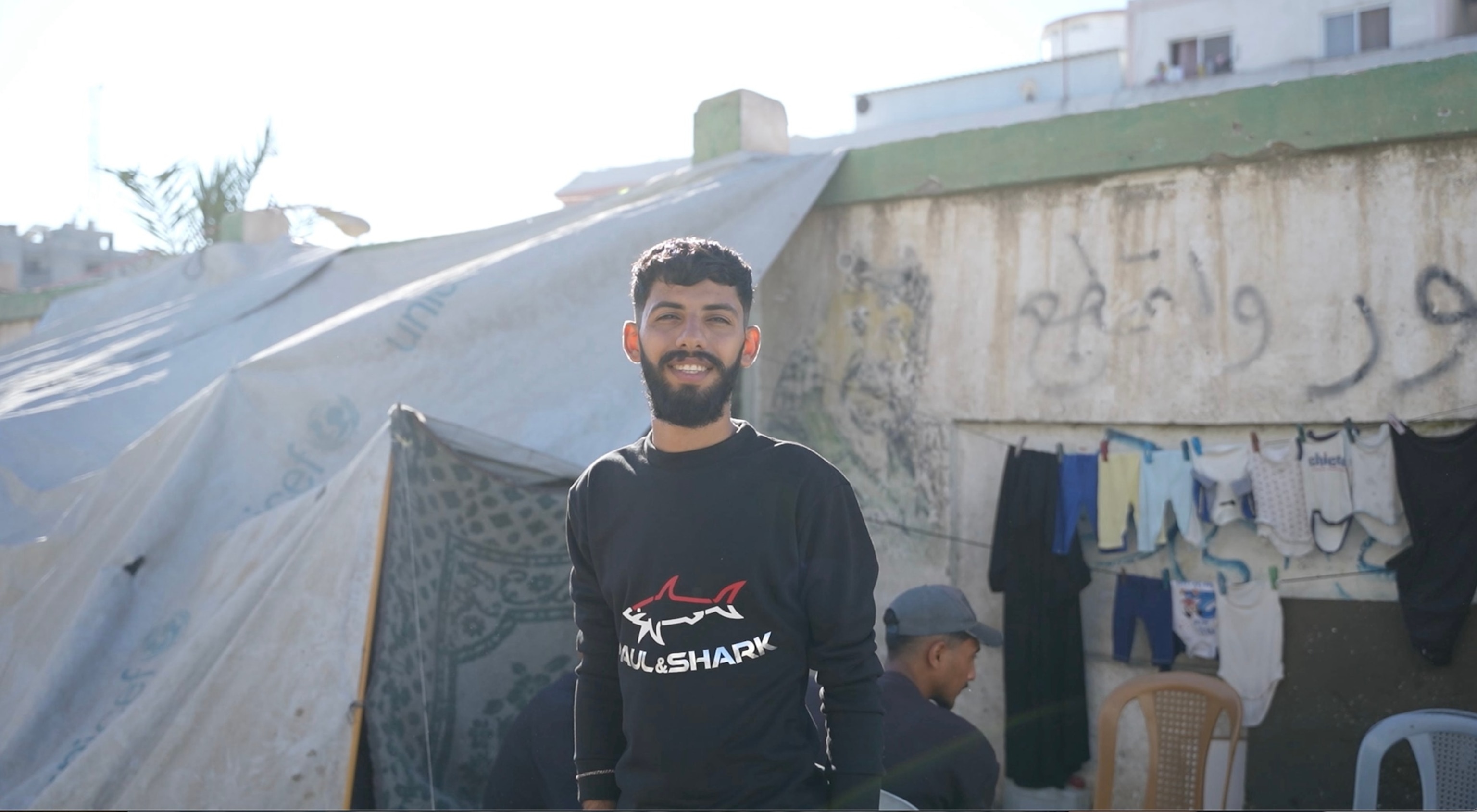
Palestinian Abdullah Wa’el Mohammed Farhan stands outside his family’s tent in Khan Younis, Gaza, on October 14, 2025, after being released from an Israeli prison.
Diaa Ostaz/ABC News
“When they told me about my release I didn’t believe it because more than once [Israeli authorities] They told us about our release and moved us from one prison to another while they tortured and beat us,” Farhan said.
ABC News has contacted the Israel Defense Forces and the Israel Prison Service about allegations by Farhan and other released prisoners of being tortured and starved while incarcerated, but have not received a response.
Fahan’s sister, Samaher Farhan, 21, told ABC News that while she is grateful they were reunited, she admitted she was sad that her brother had to return to a community torn apart by war.
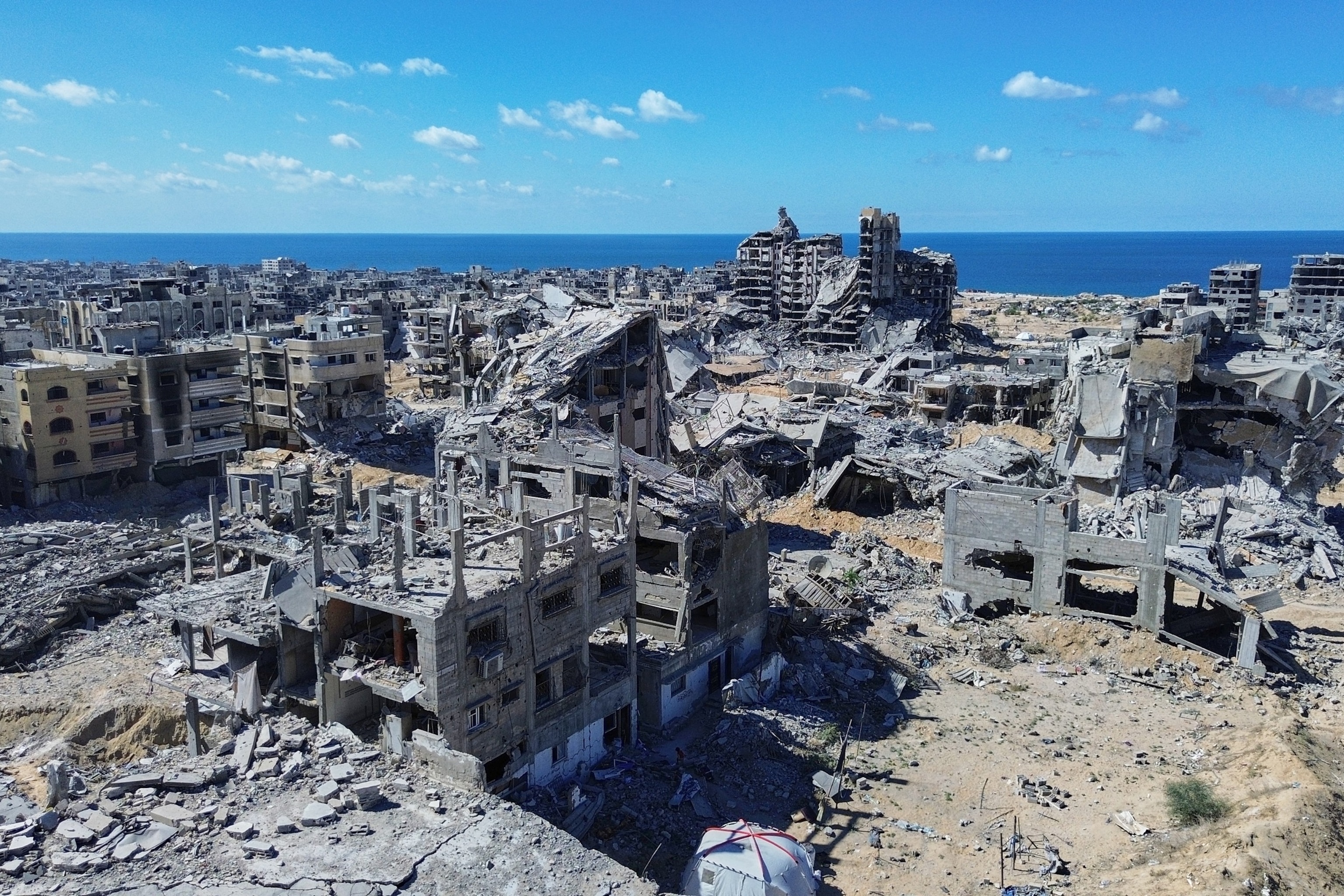
Buildings destroyed during two years of Israeli army bombing are seen near the coast in Gaza City, October 15, 2025.
AP
“When I saw Abdullah yesterday, I felt a mix of happiness and sadness because of how he looked before he went to prison and how he looked now,” Samaher Farhan said.
He said he hopes to return to live in his home, which is still intact but in an area that is not habitable. At the moment, he said his family lives in a tent.
“We feel bad because this is not a dignified welcome for a prisoner,” Samaher Farhan said. “How can he go out in a worn-out tent? So, it was a sad feeling. I even tried not to meet him or sit with him for a long time because the situation is terrible in this worn-out tent.”
He said that when his brother was taken prisoner, his neighborhood was still in good condition, adding: “It was barely 1% of the destruction we have now.”
The United Nations and other organizations have reported that there is no safe place in the Gaza Strip, which measures approximately 40 kilometers long and 12 kilometers wide. The IDF has designated most of the war-torn territory as a “no-go zone,” issuing evacuation orders for civilians there, according to the UN Office for the Coordination of Humanitarian Affairs.
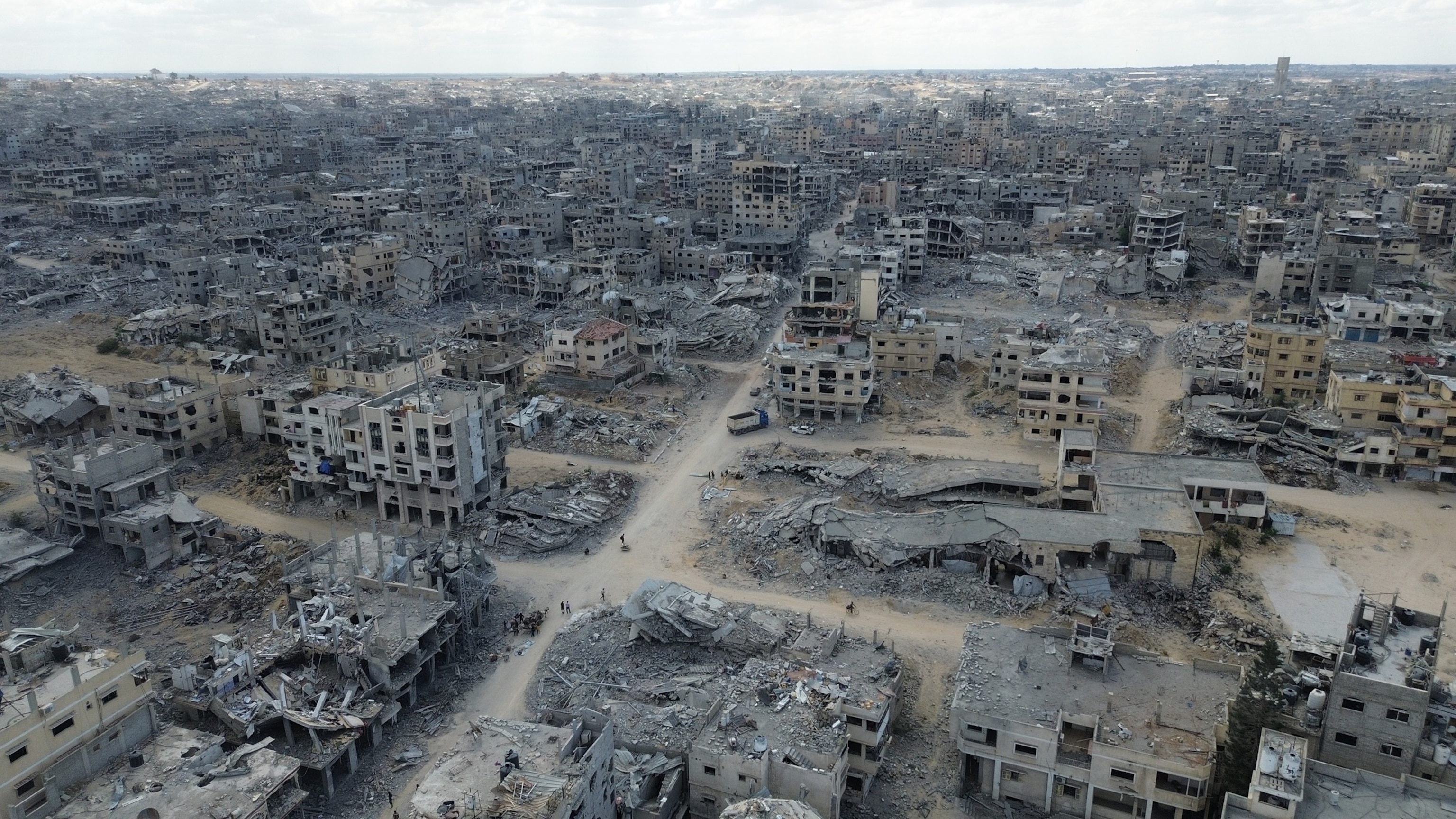
An aerial view shows destruction in the Al-Katiba area in Khan Yunis, southern Gaza Strip, following the implementation of the ceasefire and the withdrawal of Israeli forces to the designated buffer zone, October 12, 2025.
Anadolu via Getty Images
According to a damage assessment According to the UN Satellite Center, 83% of all structures in Gaza City, the capital of the Palestinian territory, are damaged. The assessment identified at least 17,734 structures that have been destroyed, approximately 43% of the total number of damaged structures.
In a report released Tuesday, the U.N. My dear that the reconstruction of Gaza will cost around $70 billion.
In its latest report on Wednesday, the Palestinian Health Ministry said nearly 68,000 Palestinians were killed in the Gaza Strip during the war, which began when Hamas terrorists launched a surprise attack on Israel on October 7, 2023, killing more than 1,200 people and taking about 250 more hostage.
The last 20 living Israeli hostages were released by Hamas on Monday as part of the ceasefire agreement.
Shadi Abu Sido, a Palestinian photojournalist who was among those released from an Israeli prison on Monday, said he was shocked by the widespread devastation that has occurred in Gaza since he was detained in March 2024.
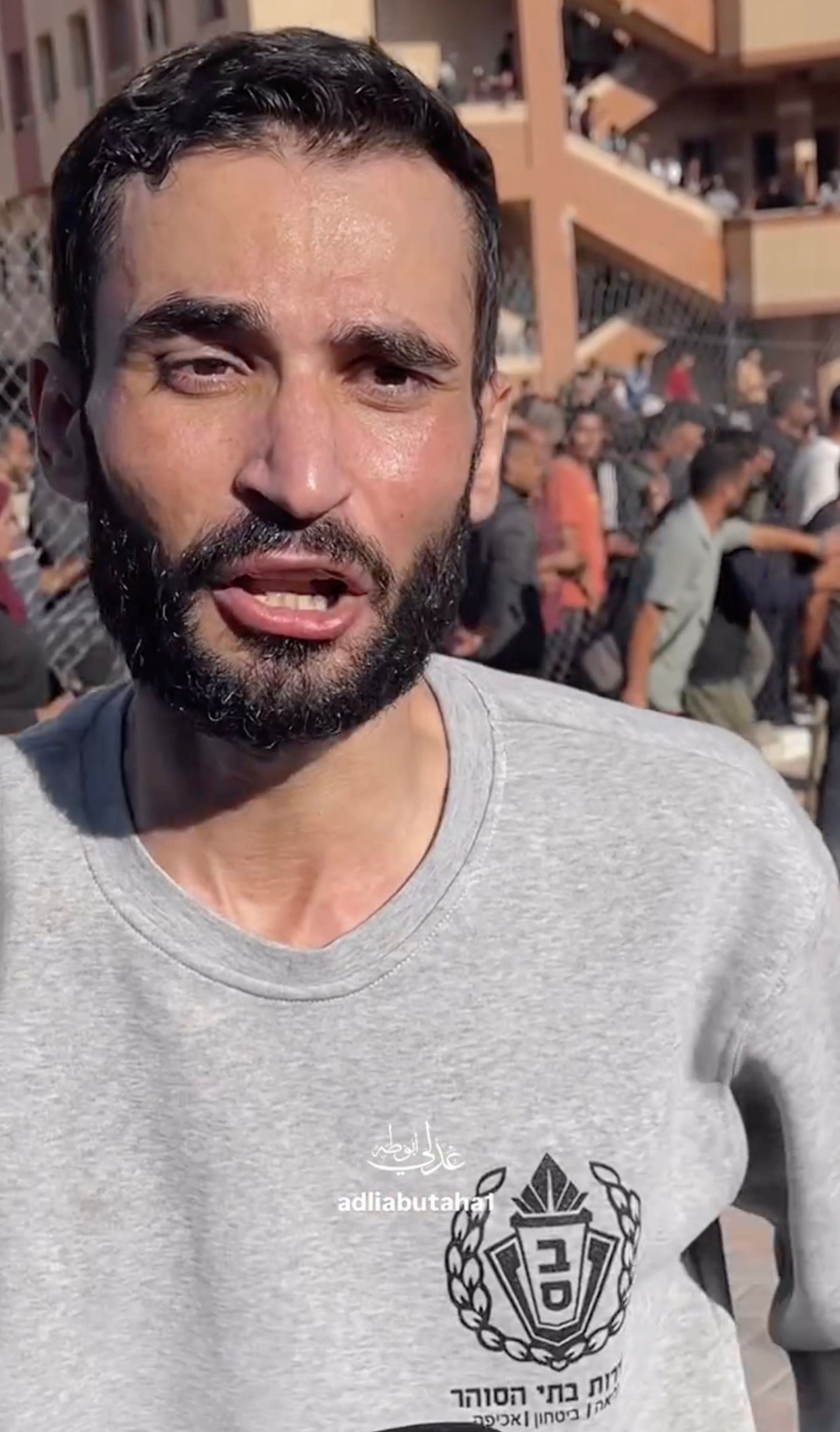
Released prisoner Shadi Abu Sido speaks to journalists after returning to Khan Younis, Gaza, on October 13, 2025, after being held in an Israeli prison.
Adli Abu Taha
“I entered Gaza and found it was like a scene from Judgment Day,” Sido said in video testimony. “This is not Gaza. Where is the world?”
He said that while he was in prison, an Israeli prison official told him that his wife and two children had died during the war. But once he returned home to Khan Younis, he said he learned that was not the case.
“I heard his voice, I heard my children, I was amazed. It can’t be explained, they were alive,” Sido said in an interview with Reuters.
But for another Palestinian prisoner, the euphoria of being freed was quickly replaced by agony when he learned that his three children (aged 2, 5 and 8) had died in the war.
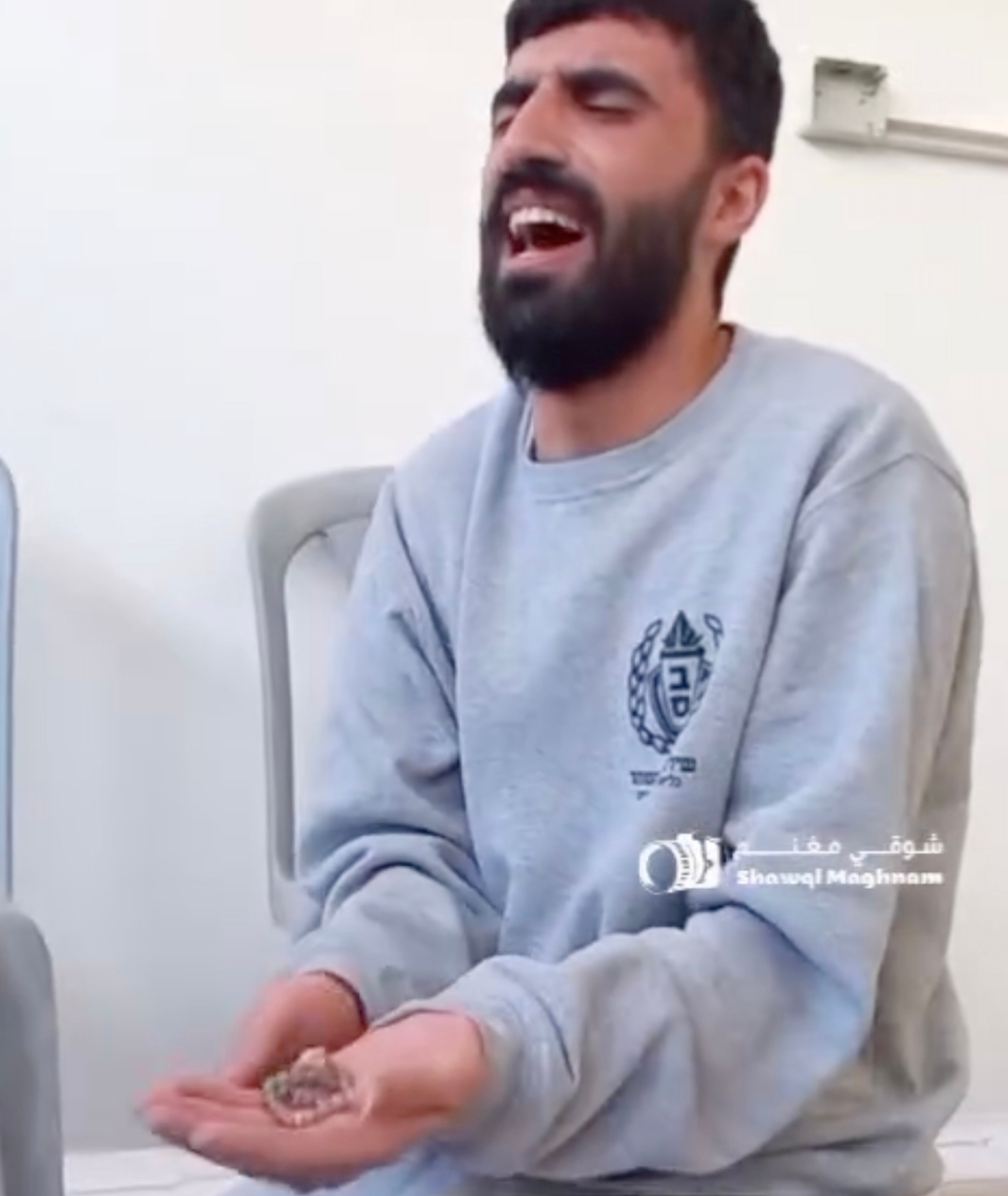
A released Palestinian prisoner, pictured here on October 13, 2025, in Khan Younis, Gaza, holding a bracelet he made in prison as a birthday gift for one of his daughters, only to discover that she and two of his other daughters were killed during the war.
@shawqi_maghnam / IG
In video testimony, the man, whose name was not revealed, is seen falling to his knees and sobbing.
In the video, the man holds a bracelet in the palm of his hand and says he had made it in prison and planned to give it to his youngest daughter.
“I made this for my daughter, whose birthday was supposed to be in five days,” he said in the video.
ABC News’ Bill Hutchinson contributed to this report.






